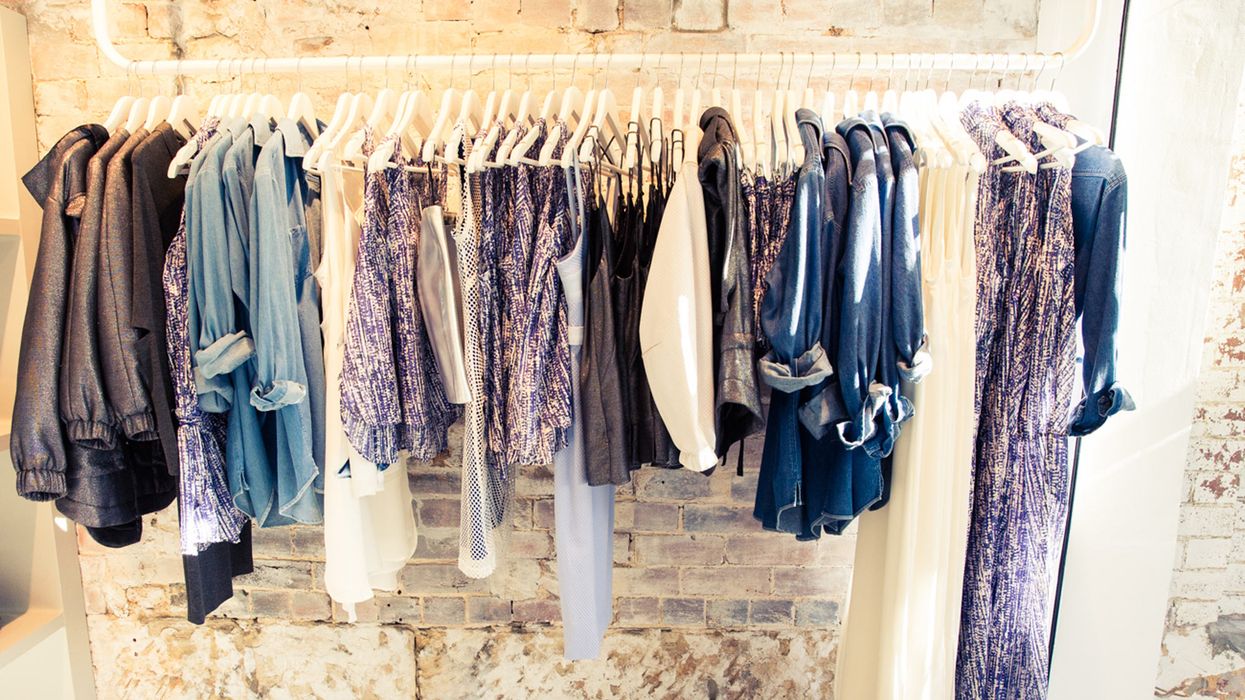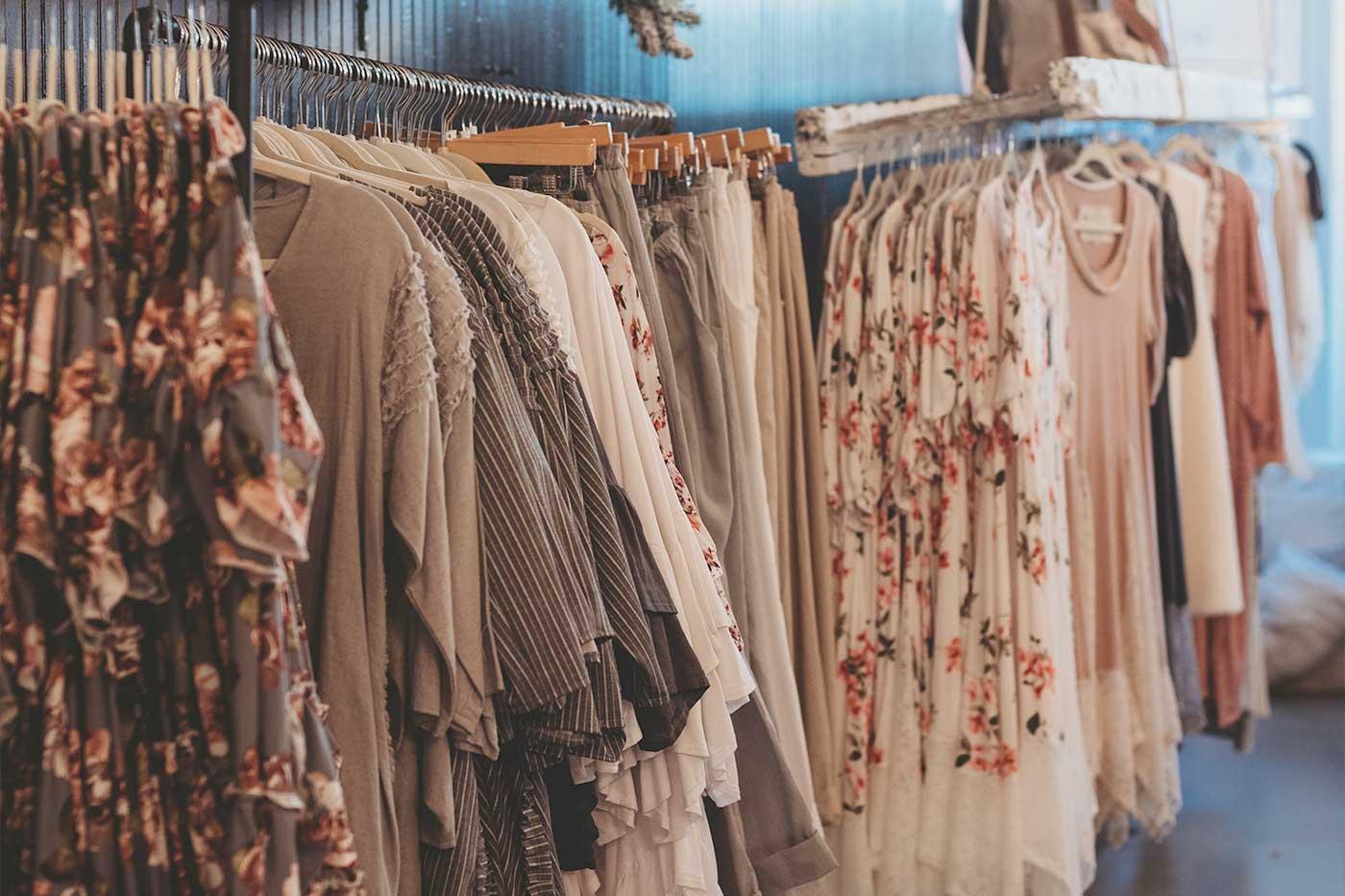The Surge of Online Shopping: Searching For Boutique Fashion at Your Fingertips
The Surge of Online Shopping: Searching For Boutique Fashion at Your Fingertips
Blog Article
Checking Out the Development and Influence of Clothes on Modern Fashion Trends
The advancement of garments has substantially influenced modern-day fashion patterns, merging historical precedents with advanced innovations. Legendary numbers like Coco Chanel and Yves Saint Laurent revolutionized the fashion industry by presenting principles that prioritize convenience and availability, which continue to resonate today.
Historic Fashion Influencers
In the tapestry of style background, particular numbers have actually left an indelible mark, forming the fads and designs that define entire periods. Coco Chanel, a revolutionary designer, redefined females's style by presenting comfy, stylish apparel that departed from restrictive bodices. Her renowned Chanel fit and little black outfit have become ageless staples in closets worldwide. Christian Dior's post-war "New Look" in 1947, with its event of femininity with complete skirts and cinched waists, marked a return to opulence and has continued to affect developers.
Elsa Schiaparelli is one more pivotal number, renowned for her progressive layouts that integrated surrealist art, teaming up with Salvador Dalí to develop wayward pieces that challenged traditional appearances. Her cutting-edge use of color and strong patterns resounds in modern style. Yves Saint Laurent, meanwhile, democratized haute couture with prêt-à-porter collections, bringing path styles to the masses and setting a criterion for modern-day ready-to-wear lines.
These visionaries, to name a few, not just revolutionized fashion in their times yet also established withstanding patterns that resonate in today's garment industry, providing a structure upon which modern developers continue to innovate and build. Their heritages emphasize the value of creativity and daring in vogue's ever-evolving narrative.
Technological Innovations in vogue
Amidst the vibrant landscape of the fashion business, technical advancements stand at the leading edge of advancement, reshaping how designers develop and consumers involve with style. The assimilation of 3D printing has actually reinvented layout procedures, making it possible for designers to try out intricate structures and lasting products that were formerly impossible. This innovation promotes rapid prototyping, reducing waste and accelerating production times.

Smart fabrics, embedding innovation into materials, are additionally transforming the market. Technologies like temperature-regulating and self-cleaning fabrics supply improved capability and convenience. Wearable modern technology, integrating features like physical fitness tracking and communication, includes a brand-new measurement to fashion, merging appearances with functionality.
Cultural Shifts and Design
As technological innovations remain to reshape the fashion industry, cultural shifts are equally significant, redefining design and customer preferences. Over the last few years, the rise of social media sites platforms has actually sped up the circulation of worldwide style fads, enabling varied social impacts to assemble and coexist. This electronic interconnectivity has promoted the quick exchange of ideas, causing a more inclusive and eclectic interpretation of style that mirrors the diverse nature of contemporary culture.
Cultural recognition and gratitude go to this web-site have actually triggered developers to draw inspiration from a wider spectrum of historical and ethnic contexts, integrating typical motifs with modern looks. This fusion has resulted in style that resonates with a bigger audience, advertising a sense of identification and belonging throughout different demographics. Furthermore, the raising demand for customization has actually driven brand names to use adjustable choices, allowing consumers to express individuality while mirroring their social heritage.
Additionally, moving social worths have influenced style, with inclusivity and diversity becoming main motifs. The sector has started to accept designs and influencers of various body kinds, ethnic backgrounds, and sex identities, difficult conventional beauty requirements. This improvement emphasizes the power of social shifts in forming the future of fashion, as design becomes an extra authentic expression of individual and cumulative identity.
Sustainability and Modern Style
While the fashion business proceeds to evolve, the essential for sustainability has actually become increasingly immediate, influencing contemporary design like this techniques. This shift aims to attend to ecological worries and honest considerations, bring about a reevaluation of typical manufacturing methods. Designers are currently integrating lasting products, such as organic cotton, recycled polyester, and biodegradable materials, right into their collections, find out reducing the ecological impact of fashion. The increase of slow fashion, which highlights top quality over quantity, motivates consumers to buy classic items instead of short-term patterns.
Moreover, modern-day design is characterized by its innovation in lessening waste and promoting circularity. Strategies such as zero-waste pattern cutting and 3D knitting are getting grip, enabling developers to create garments with marginal fabric wastefulness. Additionally, brand names are adopting clear supply chains, making certain liability and cultivating customer depend on. This approach not just minimizes ecological effect yet likewise boosts the social duty of style homes.

Future Trends in Fashion

Sustainability will certainly proceed to be a driving pressure in forming future fashion patterns. The market is increasingly adopting green materials and moral production approaches, reacting to a growing customer demand for liable methods. Innovations such as bio-fabricated materials and closed-loop recycling systems are set to redefine exactly how clothing is created and eaten, reducing ecological impact while maintaining style and high quality.
Cultural shifts, consisting of the rise of inclusivity and diversity, will certainly additionally play an essential role. As society becomes a lot more familiar with social issues, fashion is anticipated to become a platform for expression and change. Developers will likely focus on developing collections that mirror a more comprehensive array of identities and experiences, promoting depiction and accessibility.
Final Thought
The development of clothes significantly influences contemporary fashion fads, where historic influences merge with contemporary layouts. This ongoing evolution underscores style's duty as a mirror to social values and technological advancement, suggesting a future abundant with innovation and inclusivity.
The evolution of apparel has actually considerably influenced modern fashion fads, combining historic precedents with cutting-edge technologies.In the middle of the dynamic landscape of the fashion industry, technical innovations stand at the leading edge of development, reshaping just how developers create and customers engage with fashion.While the style market continues to advance, the critical for sustainability has actually become increasingly immediate, influencing modern-day style practices. As sustainability comes to be embedded in modern-day style, it leads the method for a more liable and conscious style industry.
The evolution of clothes significantly affects modern-day style fads, where historic influences merge with contemporary designs.
Report this page